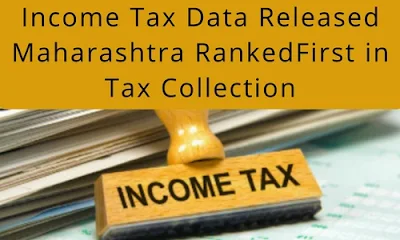
Introduction
The Central Board of Direct Taxes (CBDT) made public the income tax data collections made in the past 15 years. This is considered to be a major step towards transparent governance.What is CBDT?
- CBDT is responsible for collection and monitoring income tax in India
- Department of revenue is the parent department of CBDT
- CBDT is under Finance Ministry
- The chairperson of CBDT is the senior most IRS civil servant
- Formed in 1922
- CBDT become a statutory authority under a central board of revenue act, 1963.
How was income tax data published?
- Data published as Time series analysis with tables and graphs
- Income tax data for the past 15 years (2000-01 to 2014-15)
- Figures reported by Controller and Auditor General of India (CAG)
- Data published along with PAN statistics
Why was income tax data published?
- To encourage wide use and analysis of income tax data
- To make data available for Economists, academicians, students, analysts, scholars and researchers
- To promote transparency in governance
Some vital income tax statistics
- Only 4 percent of Indian voters are tax payers as against 23 percent
- 85 percent of net national income falls outside the tax net
- Only 5.16 crore people filed income tax returns in the fiscal year (2015-2016)
- 63 companies paid tax bills over 500 crore
- Only 3 individuals paid tax more than 100 crore
- Direct tax collections have drastically come down with a growth rate of 8.5 percent in 2015-2016 from 14.1 percent in 2011-2012
- Corporate tax also saw a decline from 15.6 percent in 2011-12 to 7.1 percent in 2015-16
- Only 13.3 lakh individuals declared to have an income above 10 lakh p.a (This data was used to exclude LPG subsidies to these individuals)
State wise Rankings
- Maharashtra ranked first with 39.9 % in tax collection
- Delhi second with 13.1 %
- Karnataka third with 8.7 %
- Tamil Nadu Fourth with 6.4 %
- Gujarat saw 185 % growth in direct tax collections (2015-16) becoming the state with fastest growth
- Tamil Nadu saw 116 % growth
- Maharashtra saw 112 % growth
- West Bengal saw 105 % growth
- In figures, Mizoram recorded 39.2 crores in 2015-16 which is more than double the amount collected in 2014-15
- Chattisgarh recorded the low 0.01 % growth in direct tax collections
Implications
- These figures indicate that tax evasion is being done on a mass scale from individuals to corporate
- The worrying aspect is that direct tax collections see a decline in growth rate annually
- People income is increasing but tax paying individuals are reducing which is an irony
- According to CBDT, 23 % are accountable to pay tax but only 4 % pay tax indicating the rise in the number of willful defaulters
Way Forward
- The recent money exchange program of RBI will change the entire statistics of income tax figures
- Governments recently took steps to monitor gold transactions in jewellery shops by mandating PAN card for transactions above 2 lacs
- Indirect taxes will be streamlined through the implementation of GST
- Direct taxes needs such streamlining through PAN card based new acts
- Benami Transactions Bill passed this month is a positive measure
- All Acts and welfare measures passed by the government must pass through Bank and Government officials who are corrupt to the core
- Intermediaries or brokers play havoc and find loopholes to exploit any system
- The success of all new and progressive measures for economic growth of India lies in the correct implementation without any interference
- A positive change is possible only when the mindset of the entire stakeholders of the society change in a positive manner


